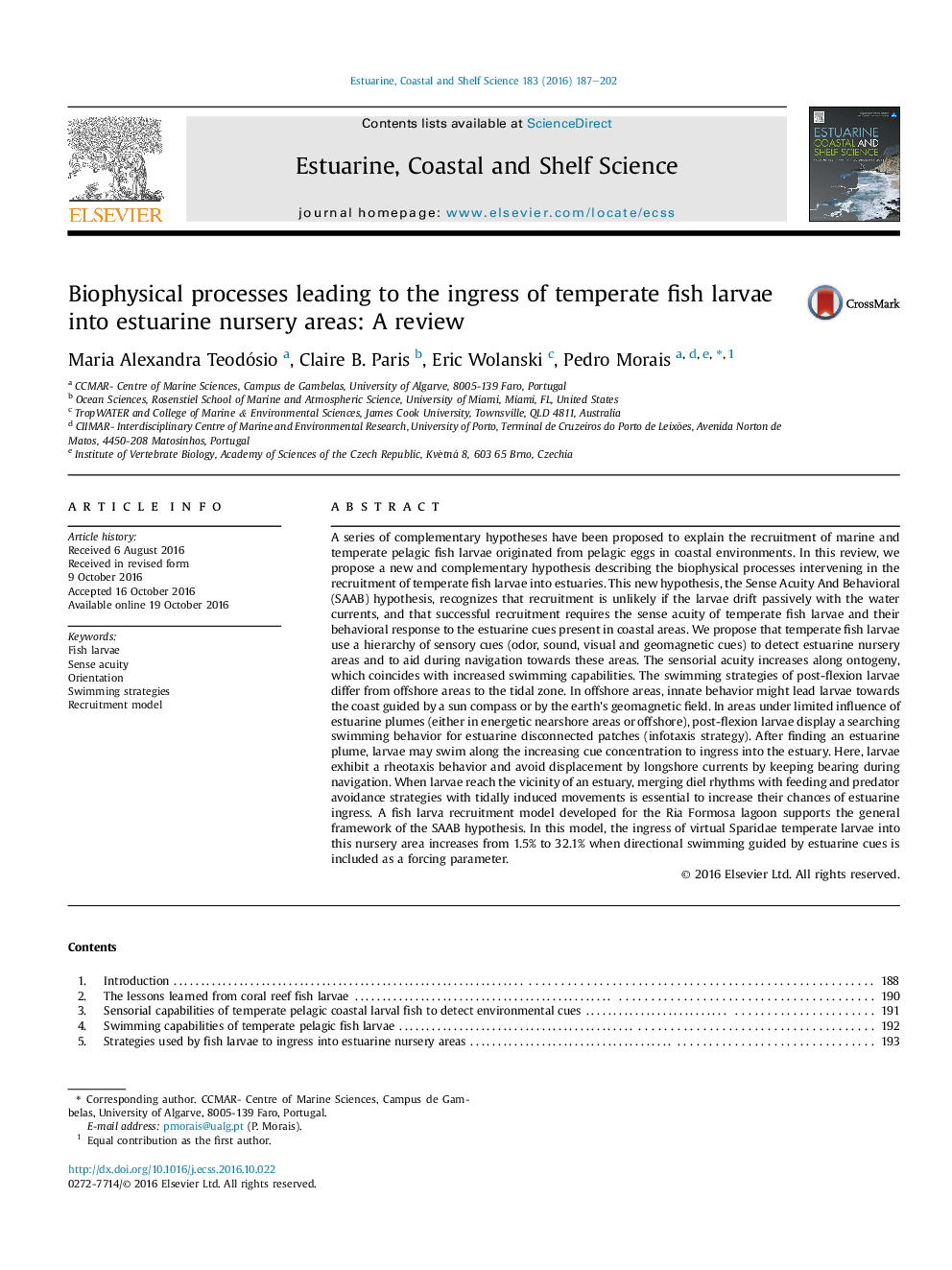| کد مقاله | کد نشریه | سال انتشار | مقاله انگلیسی | نسخه تمام متن |
|---|---|---|---|---|
| 6384436 | 1326577 | 2016 | 16 صفحه PDF | دانلود رایگان |
A series of complementary hypotheses have been proposed to explain the recruitment of marine and temperate pelagic fish larvae originated from pelagic eggs in coastal environments. In this review, we propose a new and complementary hypothesis describing the biophysical processes intervening in the recruitment of temperate fish larvae into estuaries. This new hypothesis, the Sense Acuity And Behavioral (SAAB) hypothesis, recognizes that recruitment is unlikely if the larvae drift passively with the water currents, and that successful recruitment requires the sense acuity of temperate fish larvae and their behavioral response to the estuarine cues present in coastal areas. We propose that temperate fish larvae use a hierarchy of sensory cues (odor, sound, visual and geomagnetic cues) to detect estuarine nursery areas and to aid during navigation towards these areas. The sensorial acuity increases along ontogeny, which coincides with increased swimming capabilities. The swimming strategies of post-flexion larvae differ from offshore areas to the tidal zone. In offshore areas, innate behavior might lead larvae towards the coast guided by a sun compass or by the earth's geomagnetic field. In areas under limited influence of estuarine plumes (either in energetic nearshore areas or offshore), post-flexion larvae display a searching swimming behavior for estuarine disconnected patches (infotaxis strategy). After finding an estuarine plume, larvae may swim along the increasing cue concentration to ingress into the estuary. Here, larvae exhibit a rheotaxis behavior and avoid displacement by longshore currents by keeping bearing during navigation. When larvae reach the vicinity of an estuary, merging diel rhythms with feeding and predator avoidance strategies with tidally induced movements is essential to increase their chances of estuarine ingress. A fish larva recruitment model developed for the Ria Formosa lagoon supports the general framework of the SAAB hypothesis. In this model, the ingress of virtual Sparidae temperate larvae into this nursery area increases from 1.5% to 32.1% when directional swimming guided by estuarine cues is included as a forcing parameter.
Journal: Estuarine, Coastal and Shelf Science - Volume 183, Part A, 20 December 2016, Pages 187-202
